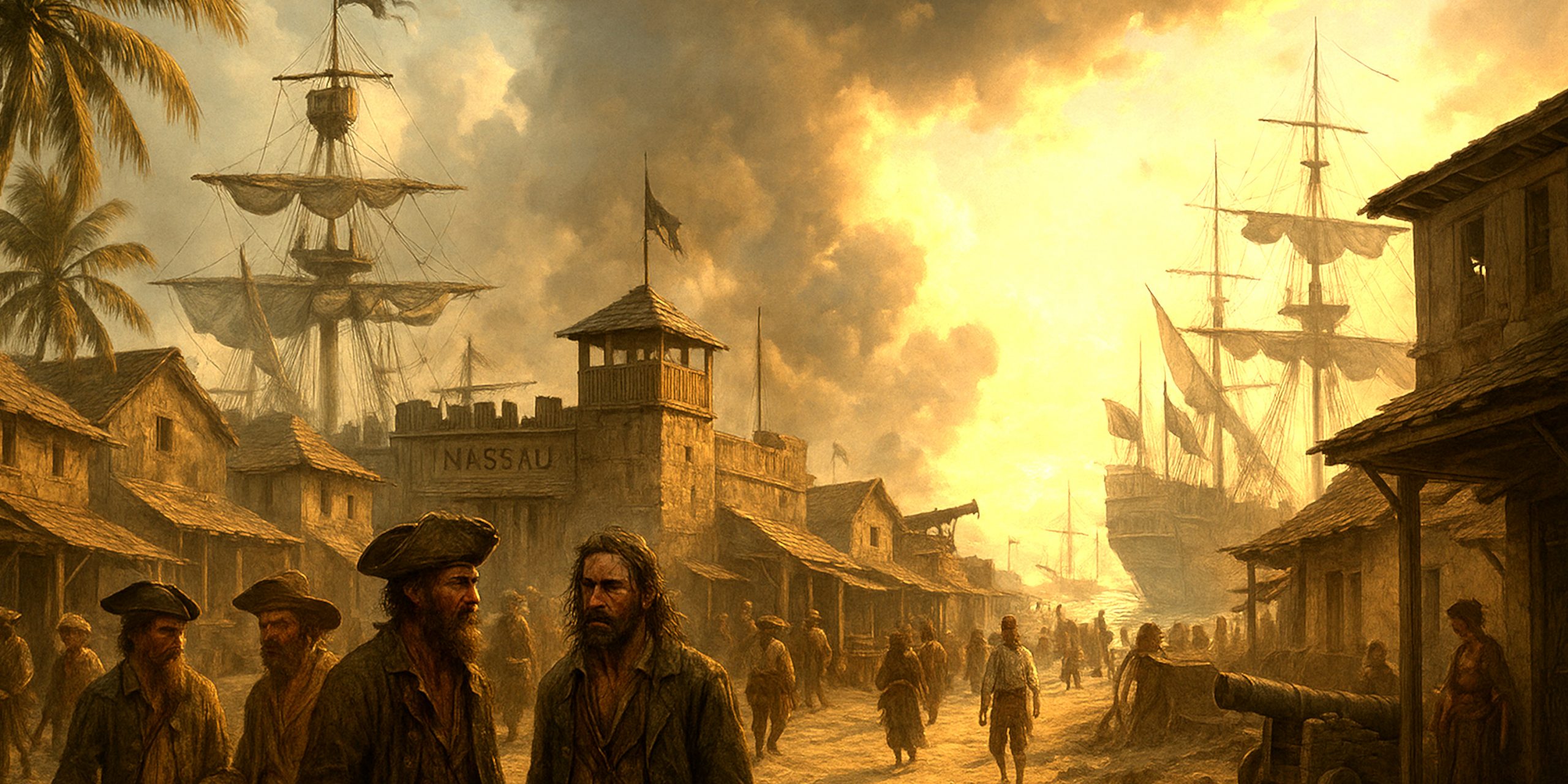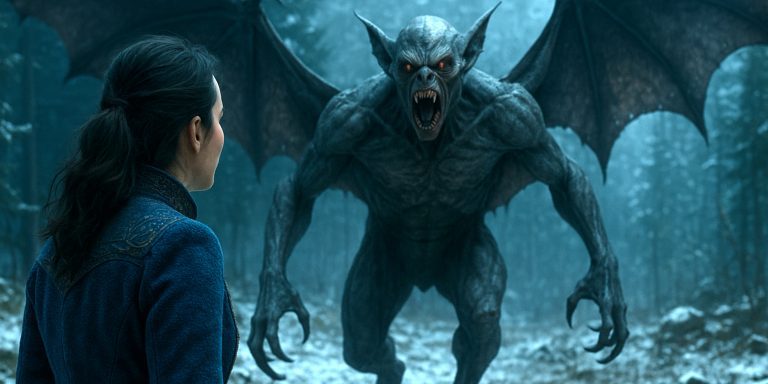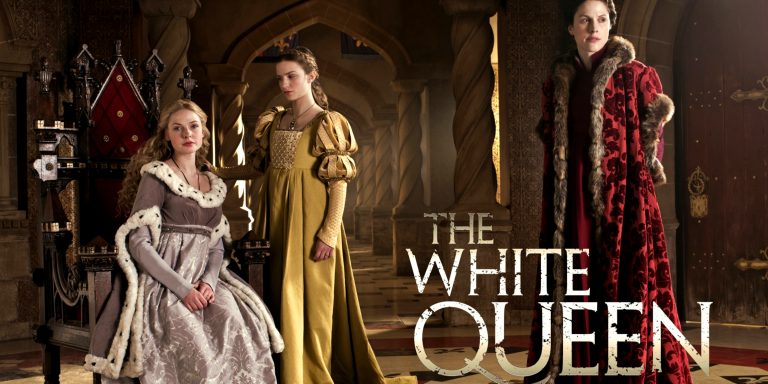
If you’ve watched Black Sails, you probably imagine Nassau as a rum-soaked, cannon-blasted paradise for pirates, traitors, and people who never button their shirts. The show gave us a violent, brilliant version of early 18th-century piracy, but how close was it to the real thing? Spoiler: closer than you’d think, but also completely unhinged.
This is the story of the real Nassau, the pirate republic that somehow existed between chaos and democracy, and how Black Sails turned that sliver of history into something cinematic, scandalous, and oddly human.
The Real Nassau: A Pirate Republic that Actually Happened
Nassau, the capital of the Bahamas, wasn’t built to be a pirate haven. It just sort of fell into that role. After the War of the Spanish Succession (1701–1714), hundreds of privateers found themselves unemployed. England’s enemies became allies, and all those shiny letters of marque suddenly meant nothing.
So, what did these men do? They kept robbing ships. Only now, everyone was fair game. Nassau became their unofficial headquarters, strategically located, with a sheltered harbour and enough distance from European powers to make interference inconvenient.
At its peak around 1715–1720, it was home to names that even Black Sails fans would recognise:
- Charles Vane, the chaotic rebel who refused to bow to anyone.
- Benjamin Hornigold, the semi-respectable leader who once had ideals.
- Edward Thatch (Blackbeard), whose beard alone could end a conversation.
- Anne Bonny and Jack Rackham, the infamous lovers who treated piracy like performance art.
For a few glorious years, they ran Nassau like an anarchist micro-state. There were rules (sort of), democracy (kind of), and more rum than any human should consume.
Nassau in Black Sails: The Myth, Refined
Black Sails took that real chaos and made it Shakespearean. The show’s Nassau wasn’t just a pirate pit; it was a political experiment teetering between revolution and ruin.
The writers built it as a prequel to Treasure Island, but what they really did was reimagine piracy as a war for freedom against empire, hypocrisy, and civilisation itself.
The show nailed certain things:
- The power struggles between captains like Vane, Flint, and Hornigold reflect the real in-fighting among pirate crews.
- The tension between survival and idealism, pirates trying to build a world that wouldn’t hang them, mirrors the historical collapse of the republic.
- The look and feel of Nassau, with its wooden fort, sand-choked streets, and worn flags, was remarkably close to accounts from the early 1700s.
But then there’s the Black Sails factor, the operatic drama, the monologues about freedom, and the kind of sword fights that would get you laughed off a real deck.
History vs Hollywood: What the Show Got Right and Wrong
| Aspect | Black Sails | Real History |
|---|---|---|
| Political ambition | Pirates dreaming of independence and a new world. | Pirates had some loose democracy, but it was mostly about profit and survival. |
| Charles Vane | A rugged antihero with a death wish. | Actually, yes. Brutal, defiant, and hung for refusing to surrender. |
| Captain Flint | Completely fictional but rooted in the paranoia of real pirate leaders. | No record of Flint, but his ideals echo men like Hornigold and Avery. |
| Nassau’s destruction | Depicted as a moral and literal implosion. | The real Nassau fell apart under British pressure and amnesty deals by 1718. |
| Anne Bonny and Jack Rackham | Complex, emotional, and dramatic. | Real-life partners in crime, but probably less poetic. |
| Blackbeard | Played as both legend and ghost. | Real, terrifying, and dead by 1718 after a brutal fight in North Carolina. |
The Fall of the Pirate Republic
By 1718, the dream of a free Nassau was over. Woodes Rogers, a privateer turned governor, arrived with a royal pardon and a few cannons to back it up. Most pirates surrendered. Some tried to resist, like Vane, but the British Navy wasn’t exactly into negotiating with outlaws.
Rogers restored order, banned piracy, and built the Bahamas into a crown colony. It was the end of the republic, though its myth, and its ghosts, would echo for centuries.
Legacy: The Pirate Dream Lives On
The real Nassau lasted barely a decade, but its legend has outlived most kingdoms. Black Sails tapped into why: these were outcasts trying to create their own version of freedom, even if it was doomed.
In a way, both the real Nassau and the show tell the same story, that people will always fight for a world where they can live on their own terms, even if it costs them everything.
And yes, Black Sails might be fiction, but when you see Vane shouting from the gallows or Flint staring into the horizon, it’s hard not to believe it could have happened.
The Seven Swords Takeaway
History gave us the bones, Black Sails gave us the blood. Nassau’s real story was messy, drunk, and violent, but also revolutionary. The show understood that. It romanticised, exaggerated, and occasionally invented, but it never disrespected the truth of it.
In both reality and fiction, Nassau wasn’t just a place. It was a rebellion in the sand, a flicker of anarchy that the sea eventually swallowed.



